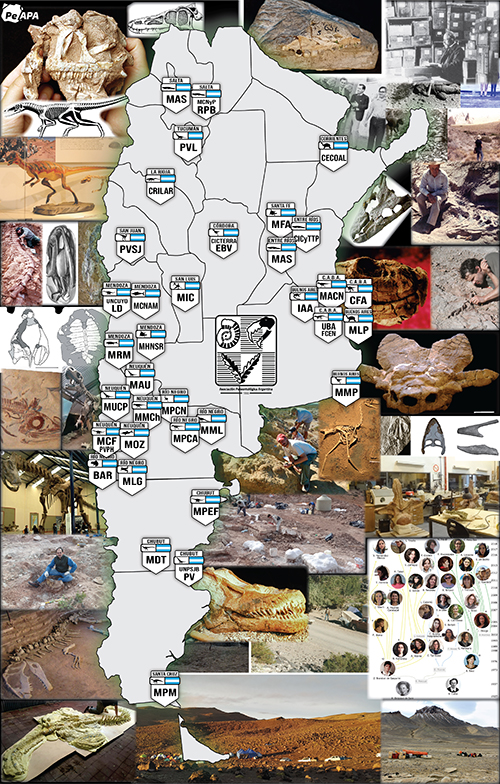ICNOLOGIA DE AMBIENTES MARINOS AFECTADOS POR VOLCANISMO: LA FORMACION SURI, ORDOVICICO DEL EXTREMO NORTE DE LA SIERRA DE NARVAEZ, SISTEMA DE FAMATINA, ARGENTINA
Abstract
The Ordovician Suri Formation, exposed in the northern part of Sierra de Narváez (Famatina System) records deposition in a wide variety of marine depositional environments strougly affected by arc volcanism. The Ordovician column consists, from base to top, of the Vuelta de Las Tolas Member (slope apron deposits), Loma del Kilómetro Member (shelf facies), and Punta Pétrea Member (volcaniclastic fan delta deposits). Although relatively uncommon throughout the sequence, trace fossils are locally abundanl in the slope apron and shelf facies. Two trace fossil assemblages have been distinguished. The Planolites assemblage consists of Planolites montanus, Palaeophycus tubularis, Helminthopsis abeli and horizontal furrows and occurs in the Vuelta de Las Tolas Member. It has been recorded from slope turbidite mudstones and siltstones mostly interpretcd as overbank deposits, This assemblage mainly represents post-event colonization related to an increase in the oxygen content due to the activity of turbidity currents within an overall anaerobic environment. The Cruziana assemblage is present in the Loma del Kilómetro Member, and has been divided into two distinctive suites. A pre-event suite consisting of Cruziana furcifera, Palaeophycus tubularis and Phycodes isp. is preserved on the sole of volcaniclastic sandstones. It records the activity of the shelf resident benthic fauna under normal oxygenation conditions. A poorly developed post-event suite consisting of Planolites beverleyensis and Helminthopsis isp. is present in interbedded sandstones and silt stones. and parallel and hummocky cross-stratified sandstones, respectively, This suite represents colonization after major breaks in sedimentation linked to volcaniclastic mass flows and storms in a shelf setting. The remarkable low diversity and complexity of the ichnofauna analyzed are unusual for Early Paleozoic seas. This fact is thought to be related to the high stress and unstable conditions of environments periodically affected by volcanic activity that prevent the development of a rich and specialized biota.
KEY WORDS. Ichnology. Trace fossils. Ordovician. Marine. Volcanism. Famatina System.
Downloads
Published
Issue
Section
License

Authors retain copyright and grant the journal right of first publication with the work simultaneously licensed under a CC Attribution-NonCommercial 4.0 that allows others to share the work with an acknowledgement of the work's authorship and initial publication in this journal.






















